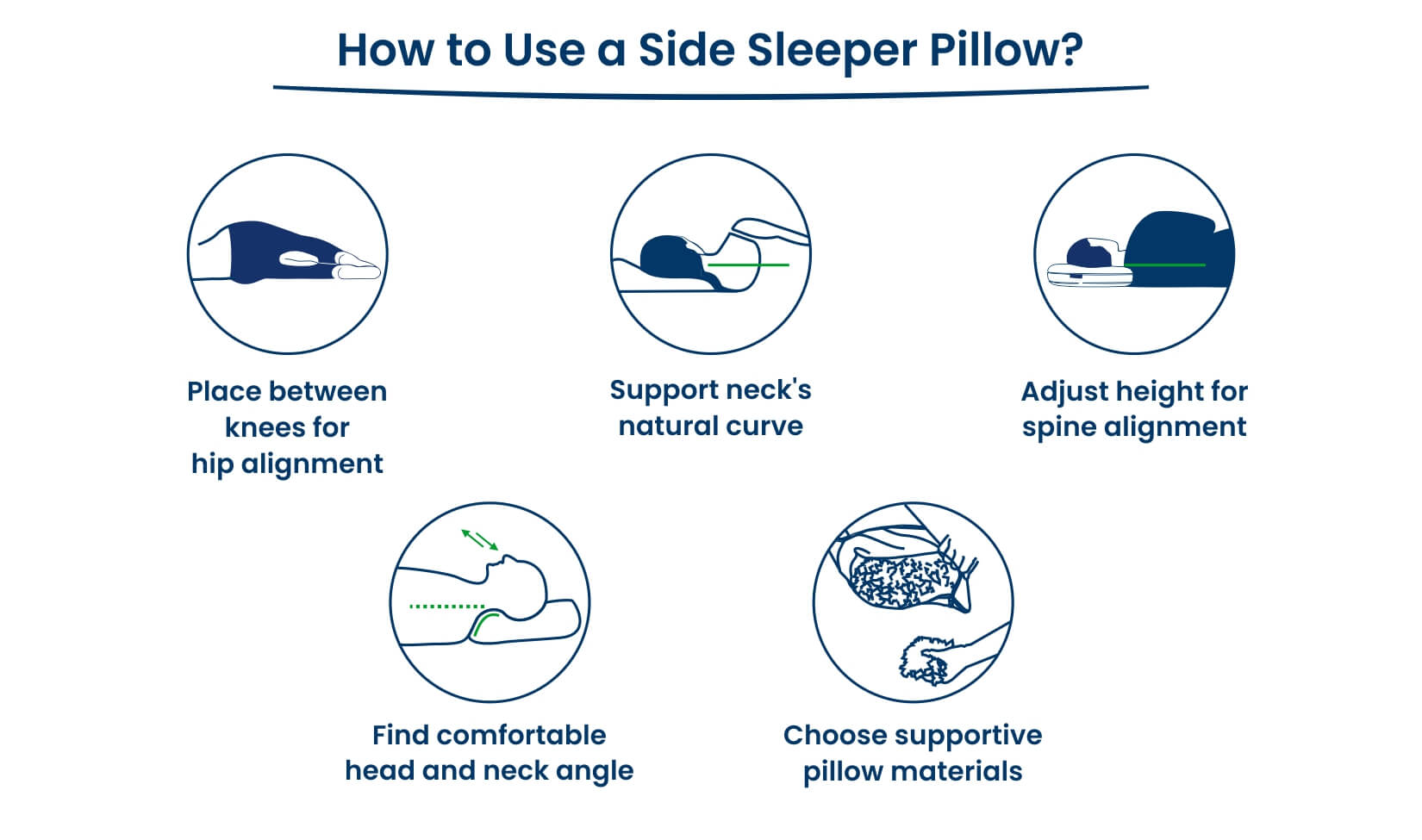A lot of people sleep on their sides compared to other sleeping positions. Sleeping on your side can have many benefits, such as improved breathing patterns and reduced snoring. But sleeping alone can also have its challenges. One of the common problems side sleepers face is strain and discomfort in their necks and shoulders.
This is where a side sleeper pillow comes in handy! These pillows are made to provide optimal support and alignment while you sleep on your side. They help your neck to maintain its natural curve to relieve pressure and reduce the chance of getting up with stiffness or soreness.
What Are Neck Support Pillows and How Do They Work?
Neck pillow is a pillow designed specifically for support and alignment of the neck and spine. Although none of us are unaware of the importance of proper neck support while we sleep, many of us use a standard pillow that does not properly contour and support the neck and head for a healthy sleeping position.
On the other hand, a neck support pillow is ergonomically shaped to cradle the neck and maintain proper alignment while sleeping, especially for the side sleeper.
Neck support pillows are typically made with neck supportive materials, such as memory foam and polyester fiber, or a combination of both. These materials are designed to contour to the natural curves of the neck while simultaneously providing support.
In this position of maintaining neck support, they allow the head, neck, and spine to be in a healed-aligned neutral position, relieve strain or pressure while sleeping, and often help alleviate neck discomfort associated with side sleeping.

Correct Spinal Alignment and Proper Support When Sleeping on Your Side
Proper spinal alignment is essential for good sleep and can help you avoid neck and shoulder pain, stiffness, and headaches. Pillows that support the neck allow for proper support, relaxation of the neck muscles, and a better sleep experience.
If you are a side sleeper, a neck support pillow can significantly enhance your overall sleep quality and bodily well-being. A neck support pillow will provide the right support and the right alignment for a refreshing night's sleep free of discomfort in the neck, shoulders, or back.
Key Differences Between Neck Support Pillows and Regular Pillows
| Neck Support Pillows | Regular Pillows |
|---|---|
| Ergonomically shaped to provide targeted support for the neck and spine | Typically, they have a uniform shape and lack specialized support |
| Contoured design promotes proper spinal alignment during side sleeping | Often have a flat or traditional shape |
| Made with supportive materials like memory foam or latex | Can be filled with various materials such as feathers, down, or synthetic fibers |
| Conform to the natural curves of the neck for optimal support | May lack proper contouring and support for the neck |
| Help alleviate neck and shoulder pain, stiffness, and discomfort | May contribute to neck and shoulder strain and discomfort |
| Promote better sleep posture and reduce pressure points | May not offer sufficient support for maintaining proper alignment |
| Designed specifically for individuals who sleep on their side or require neck support | Suitable for general use but may not cater to specific sleep needs |
| Provide a more tailored and comfortable sleep experience for side sleepers | May require additional pillows or adjustments to achieve proper support |
Ideal Sleeping Positions for Side Sleepers
To accommodate a favorable sleeping posture when lying on your side, you may consider the following tips and ideas:
1. Pillow Positioning
Utilize a neck support pillow to fill the space between your neck and shoulder, which promotes alignment. The pillow should support the neck without allowing the head to tilt too far in either direction.
2. Body Alignment
Line up the head, neck and spine which keeps the spine in a relative straight line, while avoiding an overly bent and twisted neck.
3. Pillow height
Ensure that the pillow height is adjusted so that the head is maintained in a neutral list position, both high and low is avoided. This was designed to alleviate any stress or strain on the neck and shoulders.
4. Pillow firmness
Select a neck support pillow with an appropriate firmness to match your comfort preferences and provide enough support for your neck.
5. Additional support
You may also want to put a pillow between your knees to ensure your spine stays in proper alignment while sleeping and to minimize pressure on your hips and lower back.
In addition to needing a neck support pillow, there are other strategies side sleepers can employ while sleeping. A viable strategy would be to use a body pillow for added support and improved body alignment.
Another method is to place a pillow between the knees to assist in staying properly aligned. It can help relieve pressure from the hips and lower back, as well as help relieve sciatica or other lower back discomfort.
It is equally important to note the quality of the mattress and bedding, as it matters greatly when it comes down to sleep comfort and quality.
Investing in a quality mattress and bedding made of breathable, moisture-wicking fabrics can help regulate body temperature and prevent the night sweats that many side sleepers experience.

Final Thoughts
As a side sleeper, it is critical that you optimize your sleeping position in order to sleep well and to promote sleep health.
Side sleeper pillows along with additional techniques such as a body pillow and keeping your spine in alignment can greatly improve comfort and prevent any discomfort.
You should also ensure that you invest in good quality bedding and prioritize your sleep environment to provide you with the conditions to have a good night's sleep. Implementing these strategies will improve sleeping satisfaction and help you feel ready for the day.













